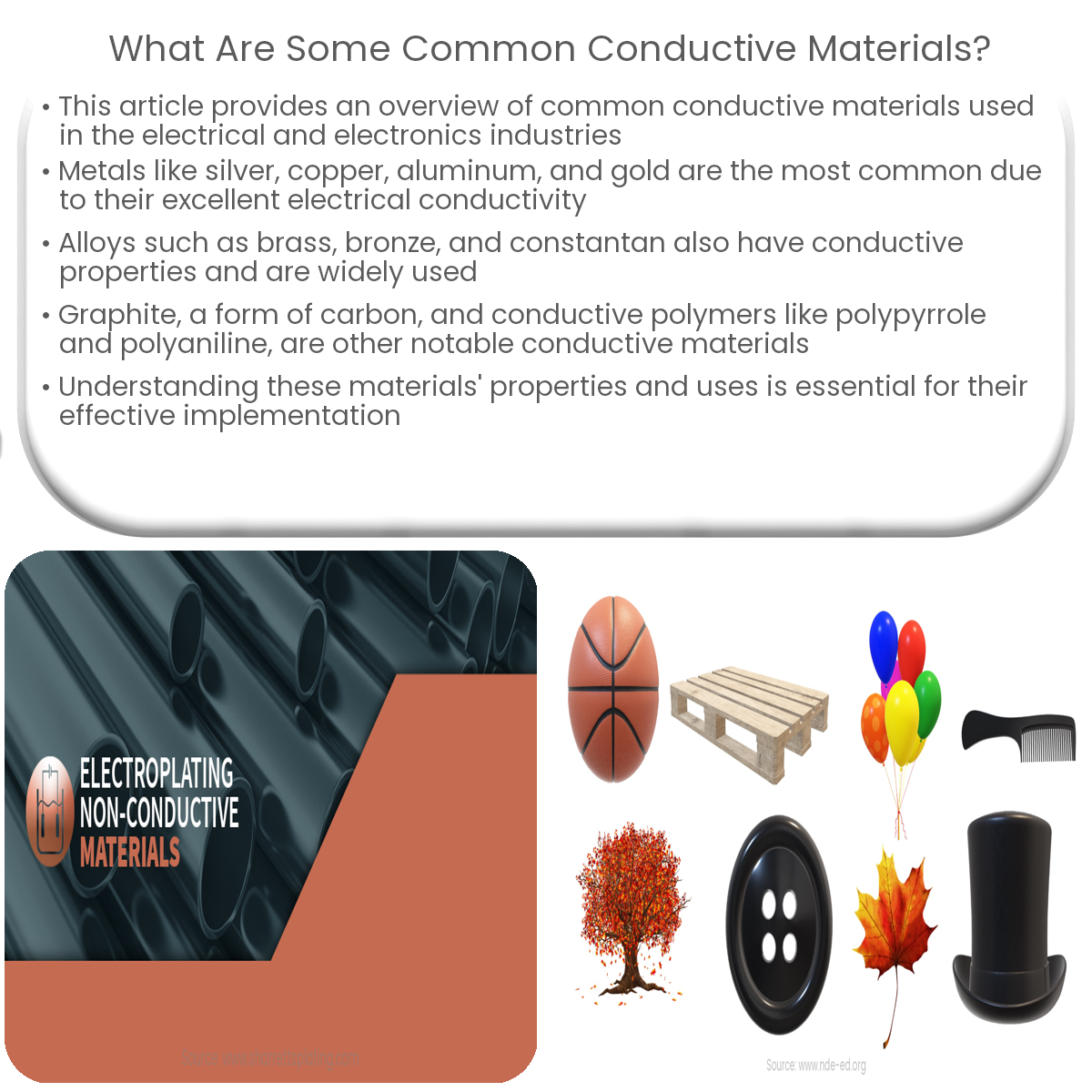Common conductive materials include metals like silver, copper, aluminum, and gold, alloys such as brass and bronze, graphite, and conductive polymers.
Common Conductive Materials: An Overview
Conductive materials are essential for various applications in the electrical and electronics industries. These materials allow the easy flow of electric current, facilitating the transfer of electrical energy. This article discusses some of the most common conductive materials, along with their properties and uses.
1. Metals
Metals are among the most common conductive materials, with many offering excellent electrical conductivity. Some of the widely-used metals include:
- Silver: Silver has the highest electrical conductivity of all metals. It is used in high-quality electrical connectors, switches, and specialized applications.
- Copper: Copper is the most widely used conductive material due to its excellent electrical conductivity and affordability. It is commonly found in electrical wiring, cables, and electrical components.
- Aluminum: Aluminum is another popular conductive material, known for its lightweight nature and good conductivity. It is often used in power transmission lines and cables.
- Gold: Gold has good electrical conductivity and excellent corrosion resistance, making it suitable for use in high-quality connectors, switches, and other critical applications.
2. Alloys
Alloys, which are mixtures of two or more metals, can also possess conductive properties. Some common conductive alloys include:
- Brass: Brass, a copper-zinc alloy, is widely used in electrical connectors, switches, and fittings due to its good electrical conductivity and corrosion resistance.
- Bronze: Bronze, a copper-tin alloy, offers moderate conductivity and is used in various electrical applications, such as switches and connectors.
- Constantan: Constantan, a copper-nickel alloy, is known for its low-temperature coefficient of resistance, making it ideal for use in thermocouples and other temperature-sensitive devices.
3. Graphite
Graphite, a naturally occurring form of carbon, is another common conductive material. It possesses moderate electrical conductivity and is used in applications such as batteries, electrodes, and brushes for electric motors.
4. Conductive Polymers
Conductive polymers are a class of materials that combine the properties of both conductors and insulators. They are usually made by doping insulating polymers with conductive substances. Some examples include:
- Polypyrrole: Polypyrrole is used in flexible electronics, sensors, and actuators due to its electrical conductivity and environmental stability.
- Polyaniline: Polyaniline is used in various applications, such as batteries, sensors, and antistatic coatings, owing to its good electrical conductivity and stability.
In conclusion, numerous materials exhibit conductive properties, with metals being the most common. Alloys, graphite, and conductive polymers also serve as conductive materials in various applications. Understanding the properties and uses of these materials is crucial for their effective implementation in the electrical and electronics industries.


